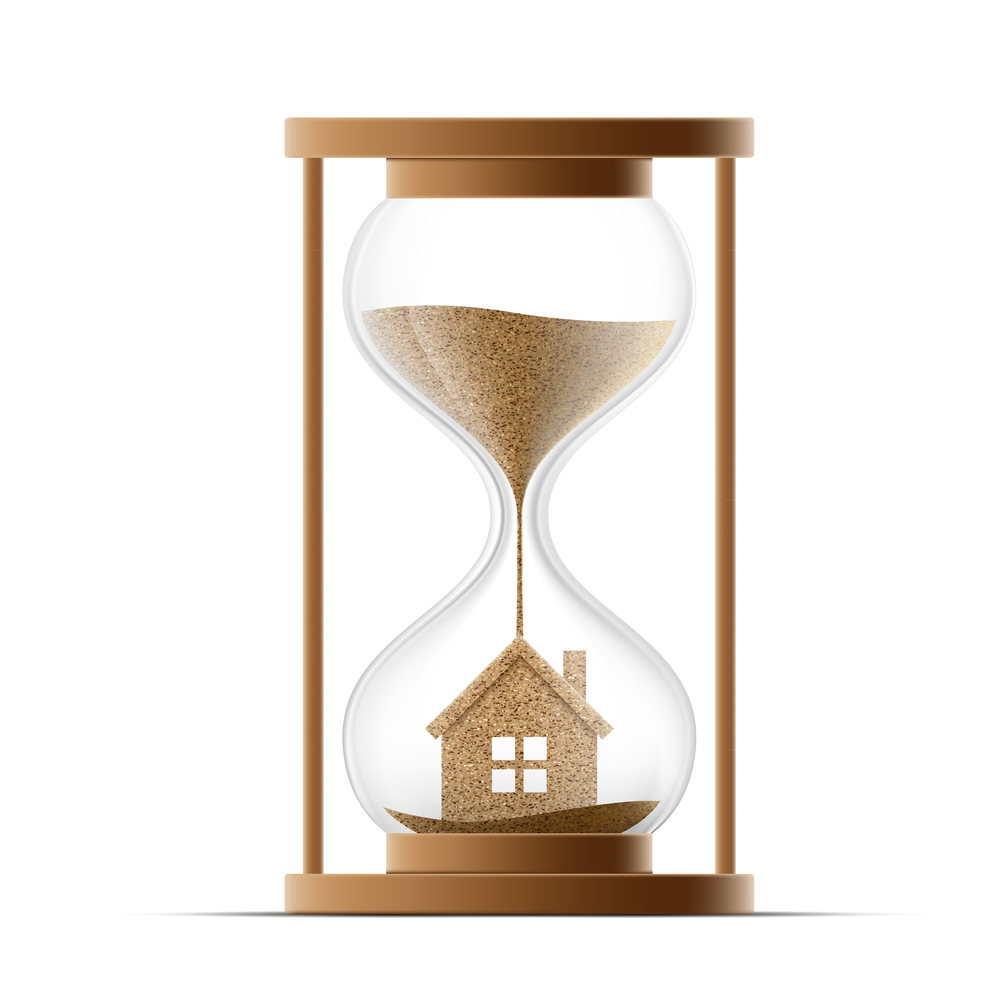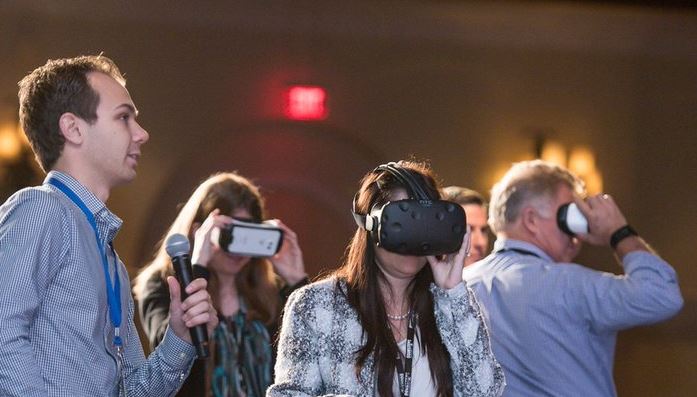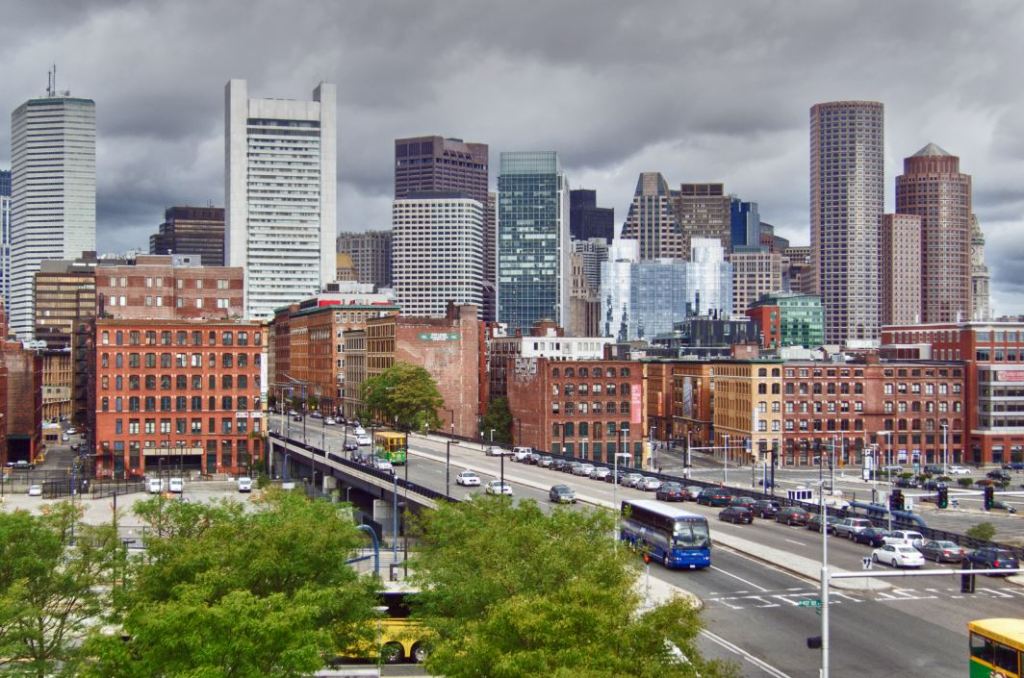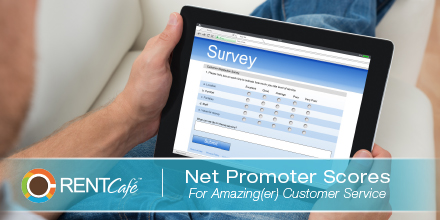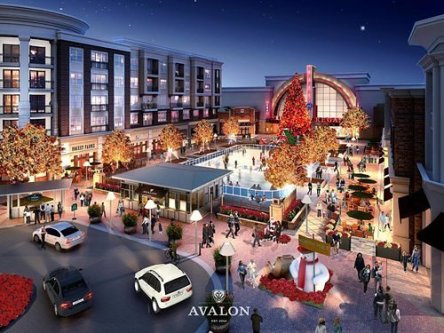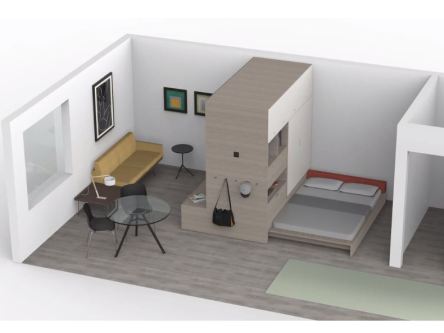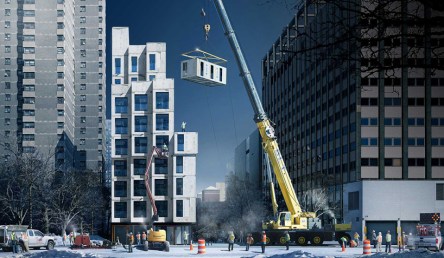When it comes to new construction, students are finding themselves in a dilemma similar to renters twice their age. A shortage of affordable and middle-market properties has students and seniors struggling to pay for shelter. Senior Care In senior housing, Boomers face limited affordable and middle-income options for their aging loved ones or themselves. New construction caters largely to high-end buyers. Location is a major factor: seniors’ most desired areas include sites with easy access to public transportation, activities, and proximity to family. These centralized locations come with high land costs. In the end, those costs and the costs of fluctuating building materials roll over to the seniors and their caretakers. Vorice Ratchford served as her mother’s caregiver for nearly a decade. She often checked for housing near her home in a southeastern suburb of Atlanta, but could never find accommodations within her price range. “Even when she was healthier, we couldn’t find housing that we could afford,” recalls Ratchford. “As her health declined—she had dementia—it became even harder.” The Alzheimer’s Association reports that housing costs range from $43,200 per year for basic services to $91,250 per year for a private room in a nursing home. In a single-earner household, taking on additional debt to pay for senior housing wasn’t an option. According to the 2013 Survey of Consumer Finances, the average American household has $15,054.54 in credit card debt, excluding mortgages and auto loans. Ratchford, like many Americans, has been struggling toward debt freedom. Ratchford became a full-time caregiver for her mother, putting three adults on the support of a single income. “I can’t imagine how someone with a full-time job could be a caregiver for someone with dementia,” Ratchford says. “Even with my previous job, every cent of my income would need...
Community Gardens
Investment Insights
As a gardener, I took personal interest in the community gardens popping up throughout the US. I expected to find plenty of resources on the practicality and returns on such projects. Unfortunately, I had no such luck. What I’ve found, though, may help you determine if a community garden is a worthwhile addition to your multifamily property. We can begin with the question that is likely in the forefront of your mind, “What will it cost me?” That answer depends on several factors. Primarily, the costs of the garden depends on its size and the materials used. Rot- and pest- resistant cedar wood will cost more than pressure treated wood, for example. When using local, recycled wood, you may just pay for transportation. Then your costs will vary based upon how the apartment garden is established. In most cases, the site is responsible for the installation. The site furnishes irrigation, a few tools, and perhaps the first season of plants (since an active garden is an easier sell than bare earth). With greater involvement, the costs increase to accommodate maintenance of the site, perhaps a part-time gardener or additional time on the clock for maintenance techs. The potential returns also depend on whether or not residents pay a fee for using plots, or whether they are offered without charge. With those factors in mind, it is impossible to pinpoint the exact costs and returns for a community garden. But the following information may give you a ballpark idea of a garden’s value. “We’ve had our community garden for several years now,” says Vanessa Jackson, Leasing Consultant at Greystone Farms Apartments in Columbus, GA. “Honestly, most people don’t come in asking about it. But once we drive them around the property and we point it...
What’s in a Name?...
A lot, for apartments
It’s important to think through all the possibilities before you name your community. You don’t want to turn off potential renters. Bart: He lied about his name! Lisa: His name doesn’t matter, a rose by any other name would smell as sweet. Bart: Not if you called him Stench Blossom. Homer: Or Crap Weed. —The Simpsons Names don’t determine the personality traits of a person, but they do matter. And people do judge you by your name, even if it’s subconsciously. That’s why I didn’t name my daughter Kandy Kane Fiur. There will never be a supreme court justice named Kandy Kane (probably). The same goes for apartment communities. People put a lot of effort into naming their communities, which is why it’s sometimes baffling when you see communities that have names that could possibly be misconstrued. And it’s not just trying to avoid names that are offensive to people, which should be an obvious thing to do, but it’s looking in context. Take, for example, Plantation Flats. This name, in and of itself, isn’t so terrible. In fact, it’s kind of nice. But it’s a community located in South Carolina, which, for some people could have some negative connotations when they think of the name. Especially with all the controversy going on there right now. Maybe I’m just sensitive. (I mean, I did just bawl through the newest Pixar movie Inside Out, but, to be fair, I had just run out of popcorn, which definitely isn’t OK!) But it’s important to consider every possible meaning and association with a name before slapping it on a building. Be careful not to offend anyone or turn off potential renters. When naming a community, you should also think of the name’s longevity. For me at least, when apartment communities...
Snapchat Scoop
For multifamily marketing
It’s possible you’re not using Snapchat yet for your apartment marketing. Or at all. And, I don’t blame you on that one. It’s hard enough monitoring your community Facebook page. And Twitter account. And maybe you even set up an Instagram account. What about Pinterest? Phew. That’s a lot of social media! Why incorporate another platform? Especially one that, when launched, sounded like it would just be used for teens to bully each other or something. I mean, disappearing pictures and videos? It totally sounds like the social media version of putting a flaming bag of poop on someone’s doorstep, ringing the bell and then running away. Attention grabbing, but ultimately an annoyance where the work doesn’t equal the reward. But, think again. Snapchat is huge right now. (Here’s a tutorial if you’re not familiar.) There are currently millions of users who use it daily. And most of its users are in the 34 years and younger group. Hey, a lot of renters are in that age group! Don’t you want their sweet, sweet eyeballs on your marketing efforts? Sure, maybe the app is just a flash in the pan. But remember, that’s what a lot of businesses said when Facebook started getting a lot of traction. And then, all of a sudden, everyone and their grandmother had an account, and people thought it was strange if they couldn’t find yours. The apartment industry is notoriously slow adopting to new technology. But why not get out ahead of the curve? And since Snapchat users skew a little younger than some of the other social media platforms, it might be a great place to focus marketing efforts for student housing communities. So, you’ve downloaded the app. What are some good ways to use it for...
Voice Search
Quick Best Practice Tips
Voice search is growing at an incredible pace. As we write content, we need to adapt to its unique format and language. Search Engine Land reports that voice search has risen significantly in the past year. Nearly 42 percent of users adopted voice search in the last six months alone. During our recent Open Café session, the State of Search Marketing, we polled 100 users from across the U.S. to learn how they interacted with voice search. This is what we learned: 10 percent of people surveyed use voice search all of the time 30 percent of respondents occasionally use voice search 35 percent of respondents rarely use voice search Voice search appeals to about 75 percent of respondents, and that number continues to grow. When you consider that the average renter will view 20 properties online, but will only visit three in person, it is vital that your property appears at the top of their voice search results. Take a second look at your content through the lens of voice search. There are two key components that differentiate voice search from text search. The first is more descriptive, longer-tail keywords and the second is question-based search phrases. Greater Description with Keyword In a text search, users adapt to computer language. Short phrases such as “apartments cabbagetown atlanta” or “dates YASC DC 2016” offer just enough info to connect users with general information. With voice search, users speak to their personal assistant as they would a friend, using full-length and often complex sentences. “Siri, find one-bedroom apartments for rent near a MARTA station in Cabbagetown” or “Okay, Google: find the dates for YASC in Washington, D.C. this year.” With this in mind, write content that reflects how people speak to one another. You can...
AIM Insights
2016 Marketing Conference
Huntington Beach, Calif. — With the multifamily industry still enjoying rising rents and high occupancy rates in most markets, it’s no wonder this year’s Apartment Internet Marketing Conference had an air of successful complacency, as most apartment marketers have been enjoying smooth sailing lately. That doesn’t mean there isn’t room for improvement, and several hundred industry insiders gathered in Southern California May 2-4 to dig into the trendiest best practices for multifamily marketing. Here are a few key takeaways from the event: Smart apartments: still simmering Despite growing chatter about smart home technology, the sector hasn’t optimized for multifamily yet, but stay tuned, because development for the market is hot. “You don’t want to take something that’s created for single family homes and apply it to a 800 unit apartment complex … it won’t scale,” said Felicite Moorman, CEO of StratIS, a tech company focused on access, energy, and automation. Multifamily owners and managers were urged to focus on useful innovations first, before offering fancy bells and whistles that might impress prospects and residents. ROI is still a challenge, a smart home technology panel concluded. Clay Hicks, president of apartment management at Dinerstein Companies, said his firm sees an average of $45 more in monthly rent for “smart” apartments in Texas, and $60 more in California. Meanwhile, average spending for tech-forward amenities has dropped from $2500 per unit to $1500. The incredible shrinking garage The eco-conscious transit marketplace and the apartment industry have yet to intersect in a way that’s financially rewarding for either, but one thing is clear: apartment garages are getting smaller and will keep shrinking. Millennials are eschewing the personal vehicle as a transit method—in fact, 25 percent of them do not have driver’s licenses. Their dependence on apartments for housing means multifamily will see an impact. “What’s really going to go away is the garage itself,” said Manny Gonzalez, managing principal of KTGY Architecture and Planning. “We may have once built that garage with 2.5 spaces per unit, but before long I think we’ll be down to 1 space per unit, and then one half.” Electric vehicle charging stations, which have popped up at many trendy new communities as green-oriented amenities, haven’t been overwhelmed by resident use. Bozzuto Director of Sustainability Peter Zadoretzky said many sit empty at the company’s East Coast communities. However, a simpler fix, big screen TV’s with transit schedules placed in Bozzuto lobbies, has been wildly popular. Building communities with fewer parking spaces creates considerable value for Bozzuto as a developer, Zadoretzky said. “For us, it costs $35,000 to $50,000 per parking space in our new projects. To recoup that, we would have to be charging $300 per month per space.” Airbnb: Still an option If you thought the final answer to Airbnb’s efforts to play nice with multifamily was “never going to happen, don’t ask again,” a panel at Tuesday’s AIM Conference was an eye-opener. JaJa Jackson, head of multifamily partnerships for the popular home-sharing website, made this bold prediction: in the next 24-36 months, he speculated, 50 percent of multifamily housing providers will decide how to allow regulated home-sharing in their apartment communities. Airbnb is currently piloting partnerships with multifamily providers in certain urban markets, in an effort to see how owners, residents, short-term subletters and other vested parties can harmonize. Driving the continued conversation around the sharing economy is the realization of many property owners that they could have increased opportunities to bring in revenue from Airbnb-like activity, whether it’s from renting temporarily vacant units or allowing renters to list their units while they travel. “Many of the brands we spoke to are very focused on developing community at their properties, and they’re also focused on millennials,” Jackson said. “They’re thinking a lot about long term relationships, and building a feeling that their community is a place where everyone can thrive.” For property owners, hurdles about security and accountability may remain....
Continuing the Story
Multifamily Marketing Part II
In our previous post, 5 Steps to Discovering Your Story, we introduced the importance of consumers’ emotions in the sales process. You also identified features that can help your property stand out from the competition. Today, we will show you how to weave those points into a marketing story. This story creates an important emotional connection between prospects and your property—and that connection leads to sales! Weave the story web. Take a moment to review the information that you’ve gathered on your town, neighborhood, property, and its residents. What common themes or patterns stand out to you? Perhaps your property is a new construction in a recently developed part of town. It doesn’t offer much in terms of history, yet your property is positioned for a different type of story. Your story may revolve around fresh starts, new beginnings, and unlocking potential. Maybe your property is located in a working class suburb filled with families. These busy families yearn for a retreat that allows them to focus on quality time together and meaningful relationships. Your marketing story may focus on building a strong network of friendships in a welcoming and accepting environment. The options are endless. Use the results of your sleuthing to create a story about your community. Your story must fill a void in your prospects’ lives. Select your tone. Identify a narrative voice that will resonate with your target audience. Become comfortable with this voice so that it feels natural. Get feedback from a member of your target audience when needed. This voice will compose the text needed for your first campaign that will cross your website, blog, and social media. Remember, you will be able to tweak this voice over time based on campaign success. Curate captivating visuals. Photos and...
Discover Your Story
Multifamily Marketing Edition
Do you offer spacious one, two, and three bedroom apartments in a desirable neighborhood? Maybe you offer spa-like amenities, too. Guess what? The same things could be said about dozens of other properties in your area. To set your property apart from the competition, you must first learn to develop the marketing story of your community. First and foremost, consumers are emotional decision makers. (In most cases, logic is what we use to validate a decision that we’ve already made with our emotions.) Psychology Today reports that emotions are what push consumers toward action. When you want a prospect to take a site tour, sign a lease, or make a referral, you must trigger their positive emotions. By discovering the story of your community and using it in your marketing campaigns, you give prospects the opportunity to forge an emotional connection with your property. This emotional connection will add perceived value to your units. It may sound odd but you can use emotions to fill vacancies! Yet before you begin to daydream about a waitlist, you must first develop your story. The five tips below will help you create the foundation for a strong marketing story. Explore your history. Take a moment to learn about the history of your neighborhood. It may be interesting to know who first settled in the area. Another point of interest could be what industry or what person is responsible for kick-starting commerce and development in your neighborhood. You may or may not chose to integrate this information into your marketing story but the background information may prove useful during property tours. Examine your demographic. Who makes up the bulk of your community? What are the best attributes of this group? Every group has positive features, even rowdy students....
April 5: #aptday
Make the Trend Work for You
Do you have plans for NAA’s second annual National Apartment Housing Day (NAHD)? If not, you’re about to miss out on a fantastic opportunity to engage with residents, promote retention, and possibly generate new leads. NAA created the hashtag #aptday to unite owners, managers, agents, and residents for one day of social media sharing and caring. As exciting as this is for those of us who are in the industry, it doesn’t naturally generate buzz with residents. This is where your creativity comes in. #aptday can be used to promote resident retention. Research shows that there is a strong correlation between the median age of renters and low retention rates. Younger renters tend to be more transient. Using events like National Apartment Housing Day, in conjunction with social media, is a good way to catch the attention of young renters. You can engage with them, re-establish the value of your product, and let them know that their loyalty is appreciated all in one swoop. Young renters know that they have options. Make yours the most appealing option by building a one-on-one relationship with them. Here are a few ways that you can engage residents during National Apartment Housing Day. Create Friendly Competition Consider creating a competition between your community and a neighboring complex. You may also consider a competition between residents from one building to another. Competitions are a great way to promote resident engagement and trigger our natural desire to win. Of course, you must advertise something worth winning. Competitions between neighborhoods could entail a pool party with a renowned local DJ, or happy hour at a popular restaurant with one free round of drinks. If you’re creating a competition between residents, consider gender neutral prizes such as rent discounts, gifts cards to...
Online Marketing
Moments that Matter
It’s a fact: today’s renters want to do everything online. That means they want to use the Internet to find and research an apartment and even make a buying decision – sometimes without visiting the community. Is your property management business up to speed? The savvy apartment marketer needs to understand what Google calls “micro-moments” to learn how to drive prospects to property websites, grab their interest, and convert that lead more quickly than ever before. Micro-moments are your opportunities to be there, be useful, be quick, and connect the dots for consumers. What are micro-moments? According to Google, micro-moments “are critical touch points within today’s consumer journey, and when added together, they ultimately determine how that journey ends.” They are all those brief instances when people who are searching for a place to live reach a decision point. Do they click the link to your website? Or do they scroll past your search result to the next ad or competitors’ site? Once they’re on your site, do they call your leasing office or start an online application? Or do they abandon their search before taking action? Why do they matter? Online prospects place a high value on instant and accurate information. They don’t want to pick up the phone or come to your leasing office to get the answers they need. Where to start? Finding the right renters starts with attracting the right prospects. Search engine optimization (SEO) and search engine marketing (SEM) solutions will help you reach apartment shoppers at just the right moments. A solid SEO strategy delivers content that appeals to both customers and search engines, organically positioning you for maximum visibility in search results. SEM, also known as pay-per-click advertising, is about reach, relevance, and ROI. When the right...
Homeownership
Do salaries stack up?
Finder.com recently gathered data on 78 cities throughout the US. The figures were used to determine the salaries needed to buy a home and live comfortably within these cities. The average wage in the US–$52,250 according to the US Census Bureau—sustains homeownership in only 46 percent of the listed cities. Realistically, the numbers are even more conservative than the data would suggest. Of the cities examined, the top ten cities on the list that required the highest salaries would not surprise anyone. California cities occupy nearly half of the top ten. San Francisco led the pack, suggesting a salary of at least $180,600 for the average home priced at a cool $1,119,500. San Jose and Los Angeles came in second and third, respectively. A resident earning $129, 864 could afford the average home in San Jose while $90,244 is needed in Los Angeles. My beloved Atlanta comes in at 45 on the list. The average home, priced at $180,000, requires a salary of about $51,551. Jackson, MS, wraps up the list. Residents earning $43,265 can ideally afford to buy a home and live comfortably. In defining what it means to live comfortably and buy a home, the site made several assumptions that simply don’t resonate with many Americans. We will take the Atlanta market, for example. For buyers seeking a home in the $180,000s, the assumption that the homebuyer has the ability to pay off annual non-mortgage related household debt and has saved up $36,000 as a down payment is unrealistic. Manuel Cabrera, Branch Manager with CalAtlantic mortgage, shakes his head upon hearing the assumptions. “Primarily, the median home price within the Atlanta metropolitan may be $180,000 but that doesn’t mean it’s a realistic price for buying a home. There are still foreclosures and...
Renter Preferences
NMHC/Kingsley Survey Results
The results from the NMHC/Kingsley 2015 Renter Preferences Study are in! This nationwide report reflects the sentiments discovered in a survey of more than 119, 266 residents at 3,280 communities. Keep reading to learn what today’s residents expect from the rental experience. Once you know what your renters want, you can use that information to increase your retention rate, reduce turnover, and bolster referrals. Four best practices to retain residents based on NMHC/Kingsley survey findings: 1. Optimize your online presence. 80% of respondents visited the community website during their apartment search Attracting a prospect to your community is the first step in getting residents that you want to keep – and this starts online. Click here for some tips and tricks to ensure you are creating winning websites to turn your online presence into a property tour! 2. Offer online applications and lease renewals. 85% of respondents want to complete lease applications on a community’s website 68% of respondents want to complete a lease agreement on a community’s website 41% of respondents prefer to renew online, without contacting a leasing associate Residents increasingly demand faster, streamlined, and more efficient ways of completing the application process. Give them what they want: an online application and renewal process. 3. Make maintenance requests and online rent payments easy. 93% of respondents consider online maintenance requests an important resident portal feature 92% of respondents consider online rent payment an important resident portal feature 78% of respondents prefer paying rent electronically It’s simple – your residents are busy people! They need smarter solutions and options when it comes to paying rent and managing their homes. In addition to the statistics above, did you know that over 74% consider mobile access a key resident portal feature?> 4. Engage on social media. 42% of respondents said they would follow their community’s Facebook page 36% of respondents visit the community social media pages during their apartment search It’s time to get engaged! Update your social media pages with current contact information, high-quality images, and community events. Be sure to have at least one designated staff member monitoring your channels to answer prospect and resident questions. How Yardi can help The marketing and leasing solutions offered by the Yardi Marketing Suite can help you provide residents with what they really want. Use RentCafe to build impressive property marketing websites, offer resident portals with online rent payments and maintenance requests, communicate electronically with your residents, and manage your social media presence across all properties from a single platform. RentCafe CRM will help you manage online leads and leases more efficiently, and RENTCafé Connect will make sure you never miss an important resident communication via phone, chat, or email. Why does resident happiness matter? Keeping your residents happy by giving them what they want works wonders for both renewals and property marketing. (Within reason of course. You will notice that this survey didn’t include anything about bouncy castles or chocolate fountains.) You will not only retain more residents but also create resident ambassadors for your property who will recommend it to their friends, family, and social media contacts. And that kind of word of mouth advertising is money in the bank! For more tips on how to cultivate happy residents, join us and host Rommel Anacan on March 23 for “How NOT to Lose a Resident in 12 Months!” Yardi is a proud sponsor of Webinar Wednesdays, a series of bi-monthly, multifamily webinars brought to you by Apartment All Stars, NAA, and Multifamily...
Spring Cleaning
Property Maintenance Tips
This isn’t your typical spring cleaning list. Learn how to transform basic seasonal care into value-added improvements. Interior If utilities are included in your billing, early spring is the perfect time to assess your fuel costs. Buildings often consume the most fuel during the first two quarters of the year. At this point, you can get an estimate of whether you will operate in deficit or surplus for the rest of the year. Fewer surprise costs for renters can lead to greater tenant satisfaction and retention. Consider installing smart home or connected home technology this spring. These devices can ultimately help to protect your property, improve efficiency, and maximize tenant comfort. If you’re using disposable filters, replace them at least every three months to ensure optimal efficiency and air quality for your tenants. If you’re interested in reusable filters, they are now more affordable than ever. They require greater upfront investment but they can last for five years. Reusable filters are also better for the environment. The downside is that they must be cleaned and dried monthly or they will begin to decrease in efficiency. Requesting that tenants test their air condition systems at the end of winter. This way, you can get a jump start on any needed repairs before your vendor gets slammed with requests in the spring and summer. Early spring can be the perfect time to cut back unruly branches and shrubs, especially for fast-growing varieties like crepe myrtles and forsythia. Keep foliage at least five feet away from the building, window screens, and roof. Tidy landscaping can improve resident retention and minimize costly property damage. It’s time to stock up on supplies at spring cleaning sales. An ample supply of bulbs, machine batteries, water filters, air filters, and such...
Winning Websites
Creating Digital Curb Appeal
Curb appeal. It’s a real estate term that almost everyone is familiar with. It refers to how attractive your property looks to potential renters or tenants. Is the landscaping lush? Are the windows clean? Does it look like a nice place to live or work? Good curb appeal encourages prospects who are driving by to come in and talk to someone or even fill out an application. But what if prospects aren’t driving by? The rental process begins online now. That means people are checking you out from the comfort of their own home. They’re making decisions about whether to visit your property or call your office based on what they see around the web. So your properties need to have digital curb appeal too. “Today we are truly a visual society. We retain more of what we see than what we read,” says Esther Bonardi, senior director of strategic marketing at Yardi. “Because of this, it’s more important than ever to ensure that your online presence – your digital curb appeal – gets prospects interested in your community.” With RentCafe, our complete property marketing solution, you can customize your corporate and individual property marketing websites to ensure that you’re attracting prospects online long before they visit in person. Since we have a little (ok, a lot of) experience building property marketing websites, we thought we’d share some of our digital curb appeal best practices with you. Put these in place at your business to be sure you are driving online leads to your properties. 5 Tips for Creating Digital Curb Appeal Make your website mobile-friendly. First things first, you can’t expect people to rent from you if they can’t even find you. According to Google’s marketing data division, 70% of weekend apartment searches happen on mobile. Your website needs to be mobile-friendly to appear in search results on tablets and smartphones. Use high-quality photos. Show off your actual curb appeal with images that make people want to move in. Make sure to highlight the external and shared spaces as well as the actual units that are available for rent. Include a combination of property photos and lifestyle photos so prospects can visually see themselves living in your community. Include amenity details. Don’t tell prospects what you have to offer, show them! A strategically designed amenities page with photos and bulleted details will keep apartment searchers on your website. For example, our data shows that the Valley Stream amenities page was viewed for an average of more than five minutes per visitor over a three-month period. Leverage social media. If you have an active social media presence, you should be linking your social channels to your website and vice versa. You can even use social media to crowdsource photos and reviews and add user-generated content to your website. Check out how this apartment community incorporates Instagram photos on their site. Make relevant information easy to find. People want to know what’s available, how much it costs, and how to take the next step – whether that step is calling, emailing, or filling out an application. Be sure your site is easy to navigate and the important stuff is easy to see (and not buried in a wall of irrelevant copy). Refresh your website using these five strategies to ensure that your online presence is working for you, rather than against you. Need help? The amazing team behind RentCafe makes it easy for our clients to do all of this and more. If you don’t have RentCafe yet, but have questions about it, please don’t hesitate to contact us. For more tips on how to improve your curb appeal in real life, don’t miss Heather Blume’s presentation on Wednesday, February 24. Yardi is a proud sponsor of Webinar Wednesdays, a series of bi-monthly, multifamily webinars brought to you by Apartment All Stars, NAA, and Multifamily Insiders. Click here to see the list of upcoming topics...
Neighborhood Transformed
Boston’s new Green District
Extravagance and environmentalism don’t seem like natural soulmates, but in Boston a new set of developments seamlessly combines the amenities and modern sensibilities of today’s luxury living with eco-conscious construction. The result? Affordable, eco-conscious community housing for Boston’s middle class that’s been dubbed the “Green District.” The brainchild of developer Bruce Percelay, the “Green District” sits at the intersection of Brainerd Road and Redford Street in an area of Boston commonly known as Allston. Conceived as an enormous 500-units housing project with an initial cost of $125 million, the Green District consists of six buildings – The Element, The EDGE, Eco, The Metro, The Matrix, and The Gateway – designed for sustainable living. The Green District began to take shape in 2012, just after the real estate market crashed and most developers were playing it safe. “I bet the farm,” Percelay admits in an interview with the Boston Globe, but the wager paid off – the three new buildings were sold to the National Development of Newton for $150mil in 2014, with Percelay initially managing the properties. National Development took over the administration of three Green District buildings – the Element, Edge and Eco – earlier this year. Residents moving into Green District flats will be privy to a slew of environmentally friendly features, from recycled materials to energy and water efficient fixtures and appliances. Outfitted with solar panels, low-flow fixtures, and other green amenities, the Eco, Edge and Element are all LEED certified and priced 30-50% below the city’s high-end developments. Though the rents are lower than most high-end rentals, the amenities are on par with what you’d expect at the most luxurious apartments: gym, rooftop decks, a movie lounge, pet-grooming stations and even a putting green. Priced in a range that starts at $1,700 for a studio and hits a high of a little over $3000 for a 2bedroom/2bath apartment, Green District rents are about on par with Boston’s average rent of $2200-2700 for similarly sized living spaces. The development is also designed to foster a sense of community among its inhabitants, encouraging resident brunches, and offering free yoga classes. Renters can also partake of on-site dry cleaning pick-up, bike storage, and easy access to Boston’s mass transit. “We love our unit,” declares one Yelp reviewer of The Edge, “gorgeous floor to ceiling windows with custom blinds, very nice layouts and fixtures, and a sharp modern look. Nothing feels cheap or Ikea-esque. Definitely the closest to having a “home” that I’ve come to in my years of renting.” “Management has been pretty great and very, very responsive,” adds another Yelper, “they get back to you immediately and repairs are made ASAP (same day or next morning). They seem to genuinely care that you are happy with your unit and the building.” Despite the all the extras and bonus activities, the development’s commitment to the environment is readily apparent. Denizens of the ECO, the Green District’s platinum LEED homage to European design apartments, must sign a “Green Declaration” as part of their lease, stating that they are committed to energy and water efficiency, along with recycling, alternative transportation, and “other eco-conscious practices.” From inception, one thing was clear: sustainability sells. The project’s first building, the Element, opened on July 1, 2012, with 70 percent of the 100 units already rented. “The most environmentally sensitive building in the country won’t work if the tenants won’t work with it,” Percelay told the Boston Globe back in 2012. “You want tenants who understand the philosophy. Our belief is that by creating the awareness, you attract tenants who care.” “We were in the unusual situation where we controlled a neighborhood,” he elaborated. “We wanted to do something different, set a new standard. The green movement is here to...
Online Payment Essentials
NMHC Survey
The newest National Multifamily Housing Council (NMHC) survey offers dozens of helpful insights. The gathered data reflects 120,000 responses from 44 markets nationwide. Though the survey covers everything from home features to community amenities, we found one action item that can save you time, money, and headache: make online payments essential. Of those surveyed, 78 percent of renters prefer to pay rent online. If you aren’t offering online payments, your property instantly poses an inconvenience to renters. By offering online payments, you are reaching renters in a place where they spend much of their time. Pew Research Center data states that nearly 75 percent of Americans are online daily. Of that amount, more than 50 percent connect multiple times a day and 21 percent are on their mobile devices “almost constantly.” Online payment processing is a value-added convenience for renters. It allows them to automate payments, avoid late fees, and skip the hassle of ordering, paying for, and writing checks. Since so many Americans are already paying their bills online and through apps, the option to pay online becomes an expectation rather than a novelty. Online payments are also a great way to cut costs. InfoTrends analyzed costs associated with online billing versus paper billing. Electronic bill delivery and online payments averages $0.32 each, compared to paper-based bill delivery and payment at $0.76 each. Receiving online payments come with additional benefits. Rent payments are sent directly to the property bank account. There is no risk of a lost or stolen check. You can also minimize human error associated with check processing, such as a check sitting on an agent’s desk for weeks. Online payment processing simply makes sense for all involved parties. Below are a few tips to make property-wide adaption a breeze. Make It Feasible Be sure that your residents can take advantage of mobile services by providing fast, consistent internet coverage. They can’t pay online if they can’t get online. While speedy internet is great for making online payments, it’s also a must-have amenity for your property. NMHC reports that “mobile is king with 91 percent of apartment renters using a mobile phone.” The report also states that “53 percent of residents tested connectivity during their apartment tour.” It’s worth adding that 98 percent or renters state that good reception is important. Make It Effortless Adapt a user-friendly online portal. Yardi® RentCafe® makes it easy by integrating payment processing amidst other renter-friendly features. Renters can pay rent online, submit maintenance requests, and get updates on the community blog. Make It Known Do your renters know that they can pay online? There are several ways that you can highlight this service. Encourage them to opt in when signing or renewing a lease. Kick off each month with a post on social media reminding tenants to pay their rent online. Most renters will throw away a flyer in their mailbox. They will, however, take notice of a note attached to their parcel. NMHC reports that the average apartment community receives about 100 packages each week. These renters already express an interest in paying for services and products online. This is targeted marketing at its best! Print little reminders about the online payment option and them to renters’ packages. When the owners pick up their packages, they will also pick up a reminder to pay the rent online. Include a link to your online payment portal on your electronic newsletters. If you have a drop box for payments, mount a flyer about online payments near the box. When tenants drop of their checks, they are frequently reminded that there is a more convenient way to make payments. What methods have helped to boost online payment adaptation in your...
30 Day Challenge
Jumpstart your Social Media
In our last Open Café webinar, we introduced the 30 Day Social Media Marketing challenge. This challenge encourages RentCafe users to post consistently, engage with followers, and attract prospects. Now, you can participate as well! Though you can begin on any day, it may be a good idea to kick start your new social media campaign with other Yardi clients on February 1st. Commit to create at least one post each day. The 30 Day Social Media Marketing Challenge graphic below offers guidelines for getting started. These tips will help beginners create a well-rounded and effective social media marketing campaign. You will be able to: show who you are; present what you have to offer; showcase the awesome influences that inspire you; help you to interact with your target audience; and, of course, build a strong following on social media. Want more insights into what your renters want to see and know? Visit the RentCafe...
Positive Outlook
NMHC Apartment Strategies Recap
Orlando—Overdevelopment? Affordability? Rising capitalization rates? An economic downturn? Falling stock market prices? Bring it on, the multifamily market can handle it this year. At least that seemed to be the consensus at the National Multifamily Housing Council’s annual meeting, held this week in Orlando. Panelists at the conference’s Apartment Strategies Outlook event were generally bullish on the outlook for the sector in 2016. “It’s a great time to be in apartments,” is how one panelist summed it up. The litany of positive fundamental drivers are familiar by now: vacancy rates are near historical lows, with demand driven by strong job growth, the growing number of Millennials and the increasing propensity to rent among young and older renters. Rent growth since the last recession has far outpaced long-term average, while properties values have soared. The market is “Awash in Capital.” That punctuation is not a typo, but the title of a panel at the conference. Bob White, president of Real Capital Analytics, released full-year 2014 numbers that showed multifamily sales at a record high, up 32 percent over 2014. Cap rates and cross-border investment are at all-time highs, although White said that prices are plateauing and appreciation is starting to slow. The conditions that produced the influx of capital seem likely to continue into 2016. The U.S. economy, as mediocre as GDP growth might be by historic standards, remains a beacon of stability compared to the struggling economies of Europe and Asia. Not only is that attracting sovereign wealth funds and pension funds from overseas, but there is an influx of high-net-worth investors from China who want to own U.S. real estate, particularly multifamily. That is increasing competition for multifamily assets, not just Class A properties in core markets, but small- and medium-sized properties in...
Net Promoter Scores
Deliver Amazing Customer Service
Let’s start with an easy concept that can be hard to swallow: The customer’s perception is YOUR reality. You might think that your customer service and amenities are great, but it doesn’t really matter unless your residents think so too. If, on the other hand, they think your properties are not so great or even awful, that’s what everyone else—friends, family, social media circles, review site audiences—will think too. Yikes! So how can you know what your residents are thinking? You’re not a mind reader, after all! Relax, we have a solution. Enter Net Promoter Score® (NPS) resident surveys the quick and easy way to keep your finger on the pulse of customer sentiment. You can absolutely send these surveys out to residents yourself every time you want to take the temperature of a community. But to save you and your staff time, NPS surveys are integrated with (and can be automated by) RentCafe® as part of a total property marketing solution for multifamily operators. What are NPS surveys? NPS is an industry-wide standard that scores responses to a single question to identify promoters, passives, and detractors at each property. Your residents just have to answer one easy question for you to get valuable feedback. Extensive research has shown that your NPS acts as a leading indicator of growth. If your organization’s NPS is higher than those of your competitors, you will likely outperform the market. How do they work? Using RentCafe, surveys are automatically emailed to your residents based on a completed event, like a move in or move out. The email contains a single question with the option to select 0 – 10 based on how satisfied the recipient is with their experience. Who sees the results? The results can be viewed in RentCafe Site Manager and are not public. You can view individual responses from your residents and compare results across properties. What do you do next? The companies who use NPS well use it as part of a full marketing and operational strategy. Every NPS you receive becomes an action item. Each response should trigger a follow up email or other action. As a company, you might choose to: Send a thank you Ask “how can we do better?” Request a written review Why is this important? Being proactive by surveying your residents and letting them know they’ve been heard—that their feedback isn’t just falling on deaf ears—plays a big role in building advocacy at your properties. By providing better customer service, you are actually creating additional marketing opportunities at both the community and corporate levels. By responding directly to your user generated content, you create brand ambassadors to promote your property! For more details on NPS, log into Site Manager and look for Surveys under Company Settings. If you don’t have RentCafe yet, but have questions about it, you can also contact us. For more tips on how to improve your customer service level and keep your residents happy, don’t miss Jackie Ramstedt’s presentation on Wednesday, January 27. Yardi is a proud sponsor of Webinar Wednesdays, a series of bi-monthly, multifamily webinars brought to you by Apartment All Stars, NAA, and Multifamily Insiders. Click here to see the list of upcoming topics and register today. Do you periodically survey your residents? What works or doesn’t work at your...
Renting to Millennials...
What You Know is Wrong
You know all of those reports on Millennials and their love for tiny, urban spaces in walkable communities? They might be wrong. It turns out that Millennials value space and authenticity more than we previously believed—and the two rarely go hand-in-hand. A recent study suggests that while Millennials do enjoy their apartments in urban environments, they’re willing to leave rentals behind for more spacious accommodations. The BUILDER Responsive Home project reveals that young adults enjoy the amenities that urban living provides, but they crave more space. Of the participants surveyed, 83 percent said more space is the biggest motivator to purchase a home. Unfortunately, 61 percent admit that they cannot afford a home. The report suggests something that many have suspected for a while: Millennials want it all while paying next to nothing. They want airy homes in walkable neighborhoods. Easy access to recreation, shops, and restaurants should not interfere with nearby sprawling green spaces, trails and outdoor activities. When competing for the 61 percent of renters who cannot afford a home, one of the biggest challenges for multifamily firms is to figure out how to offer the most spacious living, in walkable areas, that Millennials can afford. Business Insider reports that the average median income for male Millennials is $35,000 per year and $31,069 for females. This generation doesn’t have tons of cash tucked away, either. A survey conducted by the Federal Reserve Survey of Consumer Finances indicates that the average Millennial has a net worth of $10,400. Since most Millennials do spend less than 30 percent of their annual income on housing, they don’t have much to spend on housing relative to the tall orders that they’re placing. Simply telling the Millennials, “tough luck,” won’t cut it. Some multifamily builders have chosen...
Beyond Pet Friendly
Amplified Animal Amenities
The American Pet Products Association estimates that approximately 60 percent of all Americans own at least one pet, with nearly 80 million dogs and 96 million cats as part of that lofty figure. “That’s a significant amount of prospective renters,” said Gina Bertagnolli Slater, regional property manager for Pinnacle, Las Vegas. “For our pet owners their furry friends are family. Our ability to provide an extraordinary experience for the entire family is paramount in fulfilling our mission of consistently exceeding our customers’ expectations—and that includes their pets.” The rental housing market adapted to the fact that people consider their pets as family members, and property owners are focusing more and more each year on pet-friendly amenities and services to attract and retain residents with pets. It’s a view shared by many in the multifamily business today, with developers doing all they can to attract people (especially Millennials) with pets, and companies adding a host of pet-friendly services and amenities to their communities. Features like pet parks, pet spas, pet concierge services, and even pet welcome gifts are becoming more common for people moving into apartments. Plus, with the number of Millennials moving into urban cores where there are fewer opportunities to care for a pet, it makes it even more vital to cater to the pet lover. “In most growing and developed urban markets around the United States, pets, specifically dogs, are the children of condominium and multifamily building residents,” said Scott Leventhal, president & CEO of The Trillist Companies. “Failing to cater to the needs of the full extension of someone’s family provides a shortfall in services. That is why we see the importance to provide those services to our residents.” That’s why the Trillist Companies installed Pet Respite into its buildings, which provides pet grooming...
Concierge Service
3 Benefits for Multifamily
Concierge service isn’t just for five-star hotels anymore. An increasing number of property management companies are making their communities appeal to high-end renters by providing a range of expanded resident services. Offering premier resident services can make your communities feel like luxury resorts, helping with both retention and your online reputation. It doesn’t have to be difficult to provide this level of service. Today’s technology makes it possible to give residents access to live, 24/7 services via their mobile devices. Take a look at three key benefits of adopting concierge service solutions for both apartment residents and onsite staff: Allows residents to prompt, track, and pay for services online Help your residents help you by automating processes for service requests, amenity reservations, and fee payments. Tools like Yardi Concierge let your residents authorize guests, set notification preferences, reserve amenities, track deliveries, and more with the click of a button. No phone calls, no paperwork, no hassle! Streamlines concierge functions of front desk staff When you use technology to automate resident services, your onsite team is able to manage and track everything digitally. If your solution integrates with your resident portals, so much the better. Then your team can see everything related to your residents—from parking pass requests to electronic parcel signatures—all in one place. Front desk staff members can also quickly send email alerts to notify residents as needed, eliminating time spent on the phone and creating a trackable communications record. Increases resident retention by providing desirable services A recent report by J Turner Research revealed that 75% of Millennials surveyed consider a 24-hour service request guarantee one of the three most important apartment amenities. But it’s not just the younger generations that expect this level of accessibility. The study also showed that 68%...
Ice Storm 2016
Inclement Weather Preparedness
For the past several years, the southeastern United States has been slammed with ice storms in the first quarter. You can’t stop the ice from forming, but there are several steps that you can take to keep your leasing office staff as safe as possible. While weather forecasts are known to issue false alarms, ignoring a warning can lead to dangerous repercussions: impassable roads leave employees stranded at work and their kids stranded at school; fallen trees can cut power supplies. The weather warnings are not always accurate, but the cost of ignoring them may outweigh the benefits. Use these tips to guide your staff safely through ice storm season in the southeast. Ensure that snow and ice removal equipment is ready for action. Check that property management, vendors or maintenance staff have properly prepared for the season. This is especially important if the equipment needed is kept onsite and rarely used. Jack Drobny, Senior Product Marketing Manager at Troy-Bilt, offers maintenance tips for dormant machines. “If you try to start a snow thrower after it has sat for a while, it might not start,” he says frankly. “The first thing that you’ll want to do is remove the smart plug boot, ground it to the engine block, and clear away any external engine debris,” he says. Drobny then suggests adjusting the skid shoes and shave plate, which are particularly important for breaking up ice. Once those items are secured, Drobny recommends inspecting the belts for signs of damage, checking the oil and adding fresh fuel as needed. “By taking care of those things early, you won’t be left out in the cold.” Keep additional fuel, spare batteries, and chemical ice-melting products onsite when possible. Such supplies can make parking lots and sidewalks safer...
Flexible Furniture
Micro-Space Solutions
Expandable furniture helps micro-apartment inhabitants make the most out of limited square footage with the push of a button. Trundle beds and convertible couches may define making the most of a small living space, but what’s been lacking is automation and modernization. Enter Ori, robotic furniture that appears, and disappears, with the push of a button. Modular Momentum The brainchild of Hasier Larrea, Ori furniture takes the guesswork out of transformation, seamlessly morphing floor units and wall installations into beds and pop-out closets. Ori offers a full-scale bedroom with a retractable bed that can be changed into an office or a closet, along with a full media console/credenza. Other versions include a walk-in closet, couch and various flavors of storage space. All the systems can be integrated into new and existing floorplans, which allows the Ori system to fit comfortably into any new building development or retrofit. During her tenure as the leader of the Architectural Robotics research area at the MIT Media Lab, Larrea married her robotics tech with Yves Behar design. The final product involves modular, transformable furniture Larrea and her team hope will debut early next year. “Larson’s team at the Media Lab developed the technologies behind Ori as part of the CityHome research,” Larrea told Mashable in a recent interview. “Then we created some initial functional prototypes … and went to [designer] Yves Béhar to help us ‘transform’ this initial concept from a robot/machine to a customizable system that people would love to have in their homes.” Space on Demand Ori’s first piece available for purchase includes a trundle style bed that rolls out from the bottom of a large wall of shelves. Specially designed actuators, electronics and software created by researchers at MITs CityHome project allows Ori’s furniture to almost...
New Kind of Cozy
My Micro NY
What can you get for less than 400 square feet? How about a gym, a roof terrace, stainless steel appliances and the chance to finally ditch the roommates and lay claim to your own slice of paradise. That’s the option currently being offered by Carmel Place, New York City’s first ever micro-unit development. Originally called, “My Micro NY,” this Lower East Side building includes 14 affordable housing units and is set to open in February of 2016. Sitting smack dab in the middle of Kips Bay, the newly christened Carmel Place will be New York’s tallest modular building. Winner of the 2012 adapt NYC competition, which strove to uncover a solution to the City’s housing problem, Carmel Place came about through a collaborative effort between Monadnock Development and the Lower East Side People’s Mutual Housing Association. The project’s designers, naArchitects, chose modular materials to reduce construction time, and a series of architectural flourishes make use of vertical spaces to create a sense of openness and light. Built in the Brooklyn Navy Yard and delivered by truck via the Manhattan Bridge, the nine-story Carmel Place apartments rise up on 333 East 27th street like a set of building blocks – gray in color, but multifaceted in the opportunities they promise to weary urban renters looking for a small space they can call their own. Each unit comes outfitted with kitchenettes, mini-fridges, and a two-burner/microwave combination in place of a stove. While the bathrooms are restricted to showers only – no claw foot tubs in this joint – all the apartments are wheelchair accessible. The designers made sure to incorporate large windows, Juliette balconies and 9.5ft windows to create a sense of openness and light. With hardwood floors and mostly white cabinetry, sample photos project a...

